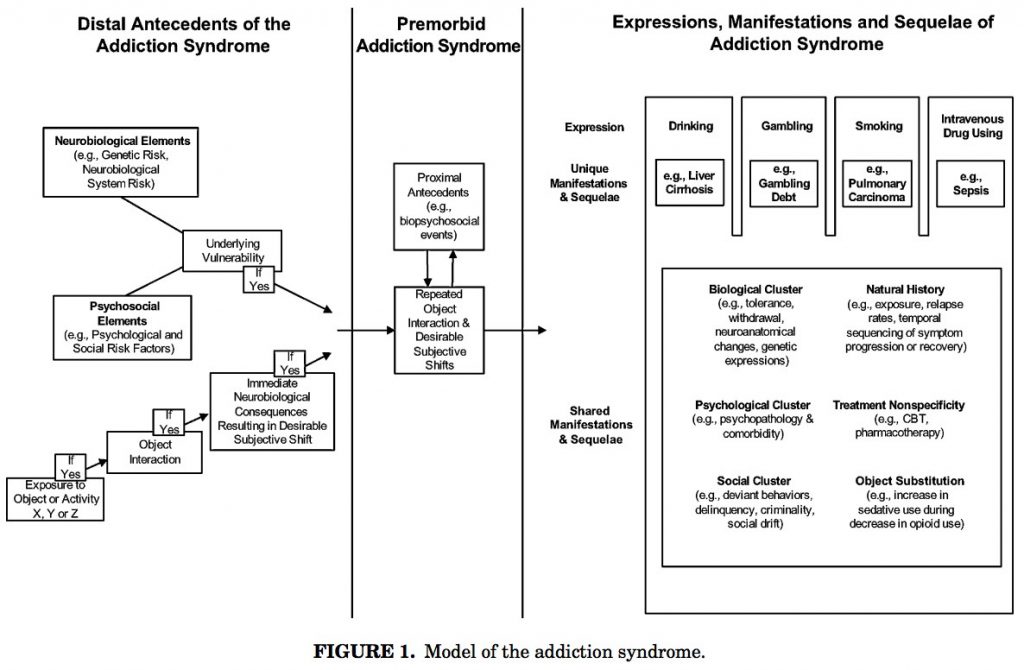The Division’s research agenda is driven, in part, by the Syndrome Model of Addiction,* an overarching theoretical framework that conceptualizes various expressions of addiction (i.e., chemical or behavioral) as opportunistic disorders that have common underlying etiological factors. Figure 1 illustrates of these relationships. The Division uses a syndrome framework to understand addiction as a cluster of symptoms and signs with multiple opportunistic expressions, as well as to test various aspects of the model and disseminate findings.
Treating Addiction as a Syndrome
The following is an excerpt from Treating Addiction as a Syndrome: Bridging Research and Clinical Practice (Shaffer et al., 2017). This article first appeared in Trends in Medicine, a Harvard Medical School online blog.
 “Addictive behaviors often coexist with other common mental health problems (Regier et al., 1990; Kessler et al., 2008), but traditional treatment models view different expressions of addiction as unique disorders (e.g., substance use disorder, alcohol use disorder, gambling disorder, etc.). When patients seeks treatment for a particular expression of addiction, clinicians usually refer them to services that “specialize” in the presenting problem. Consequently, because of the extent of co-occurring disorders among people with addiction, treatment-seekers might experience confusion and treatment fragmentation, leading to a decrease in clinical compliance.”
“Addictive behaviors often coexist with other common mental health problems (Regier et al., 1990; Kessler et al., 2008), but traditional treatment models view different expressions of addiction as unique disorders (e.g., substance use disorder, alcohol use disorder, gambling disorder, etc.). When patients seeks treatment for a particular expression of addiction, clinicians usually refer them to services that “specialize” in the presenting problem. Consequently, because of the extent of co-occurring disorders among people with addiction, treatment-seekers might experience confusion and treatment fragmentation, leading to a decrease in clinical compliance.”
“One alternative, contemporary view conceptualizes addiction–expressed as behavioral (e.g., gambling) and substance (e.g., alcohol) involved–as a syndrome that shares common etiological vulnerabilities. Viewing addiction as a syndrome suggests that not all signs of symptoms are present all of the time. The hypothesis that there is a singular addiction with multiple expressions forms the basis of the Syndrome Model of Addiction (Shaffer et al., 2004). The Syndrome Model suggests that people inherit, encounter, and accumulate different life influences and experiences, which can interact or accumulate to form factors, ranging from neurobiological to psychosocial. Some factors or combinations of factors can increase the likelihood of addiction. If people then gain access to an object of addiction, they might develop increased motivation to seek and use the object (e.g., alcohol, drugs, gambling). Within the Syndrome Model, the emphasis is on the relationship between the person and their object of addiction. Addiction resides in the relationship and not in the object.”
*This article is password protected. For access to this article, please email us with your name and the author and year of the publication.
